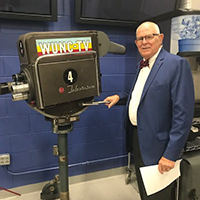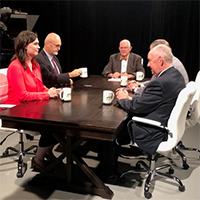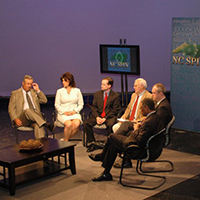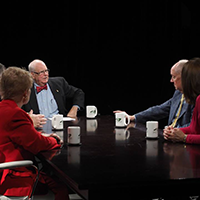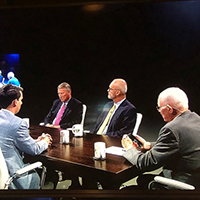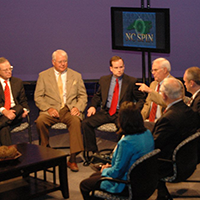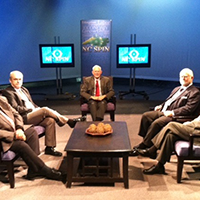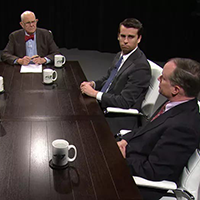Economic literacy in America is at woeful levels. In 2023, only 64% of students taking the AP macroeconomics exam and 66% of students taking the microeconomics exam received a score of 3 or better. Compare these with 81% for precalculus, 78% for chemistry, 73% for government and politics, and 71% for biology.
Even high-achieving students demonstrate relatively lower understanding of economics compared with other subjects. What about the rest?
The 2012 National Assessment of Educational Progress (the last time NEAP [sic] tested economics) found 57% of high school students having only a “basic” or “below basic” understanding of economic basics.
A stunningly low 17% of college graduates are able to correctly provide the basic reasoning as to why “free markets secure greater economic prosperity than government’s centralized planning.”
This result was the lowest response rate to any of the 33 questions posed in the 2008 Intercollegiate Studies Institute Civic Literacy Test. Similarly dismal results in other economics questions on the ISI test prompted ISI to declare “’College Joe’ appears to be economically illiterate.”
A 2005 survey by the National Council on Economic Education found a majority of high school students do not understand basic concepts in economics. Based on their quiz, moreover, adults get a grade of 70 (C) for their knowledge of economics; and students’ average score was 53 (F). Six in 10 high school students and more than one-quarter of adults get a failing grade on the economics quiz.
Such economic illiteracy causes the public to be unable to understand economic phenomena and the policies that cause them. For instance, during the recent run-up in inflation to record levels, a 2022 YouGov national poll asking about people’s thoughts on inflation, their causes and cures, found — according to the Cato Foundation — “a depressing lack of understanding of basic economics.”
An economically illiterate population will fail to hold elected officials accountable for public policy that makes society poorer. And how a society organizes its economy is vitally important. It can be the difference between a well-fed populace and mass starvation. History illustrates this reality with many tragic examples.
These reasons place the study of economics at the forefront of societal priorities. For, as the great Austrian economist Ludwig von Mises wrote in his book Human Action more than 80 years ago, “All present-day political issues concern problems commonly called economic…Everybody’s mind is preoccupied with economic doctrines.”
“Economics deals with society’s fundamental problems; it concerns everyone and belongs to all. It is the main and proper study of every citizen,” Mises continued.
So why the poor state of economic understanding, even in present-day America?
For starters, only about half of states require an economics course to graduate. And, disappointingly, most economics courses at the high school (and often college) level teach economics as a stream of dry statistical equations with little focus on what is at the core of economics: real people making decisions.
To counter this, I’ve created a course for high school students called “Economics in Action.” Unlike most public school — and college — economic courses, this course is rooted in the decisions of individuals, not statistical aggregates. Reason and logic are at the heart of the methodology of “Economics in Action.” A key quote from the textbook states, “Basic economics can be discovered through mental reasoning.”
When taught properly — and not through dry, impersonal, complex mathematical models and statistical equations — economics can tap into young people’s natural curiosity: Why are some countries rich while others remain poor? Why do some animals go extinct while others thrive? Why do some things cost so much more than others?
The course equips students with the “economic way of thinking” — empowering them with tools to understand complex phenomenon and patterns that emerge all over the world. The course goes way beyond just understanding GDP numbers into all kinds of choices people make.
Most economic courses just show students supply and demand curves and expect them to believe it is true simply because the book says so. In this course’s method, students understand why the laws of supply and demand must be true — because it uses the individual as the starting point for analysis.
Economics is not about how to get rich or make money in the stock market. It’s about understanding eternal truths about human actions and the implications derived from how human beings make choices in a world of scarce resources.
This course is designed to equip students to identify common economic fallacies that cause great harm — not through mathematical proofs but thru logical deductions from truths about human behavior.
Equipped with this knowledge, students can contribute to making the world a better place by advancing the correct economic systems for society to increase human flourishing.
Economics in Action is great for the busy home-school parent, co-op director, or school teacher. It comes complete with textbook, modules, teacher’s manual, discussion questions, and tests and quizzes.
